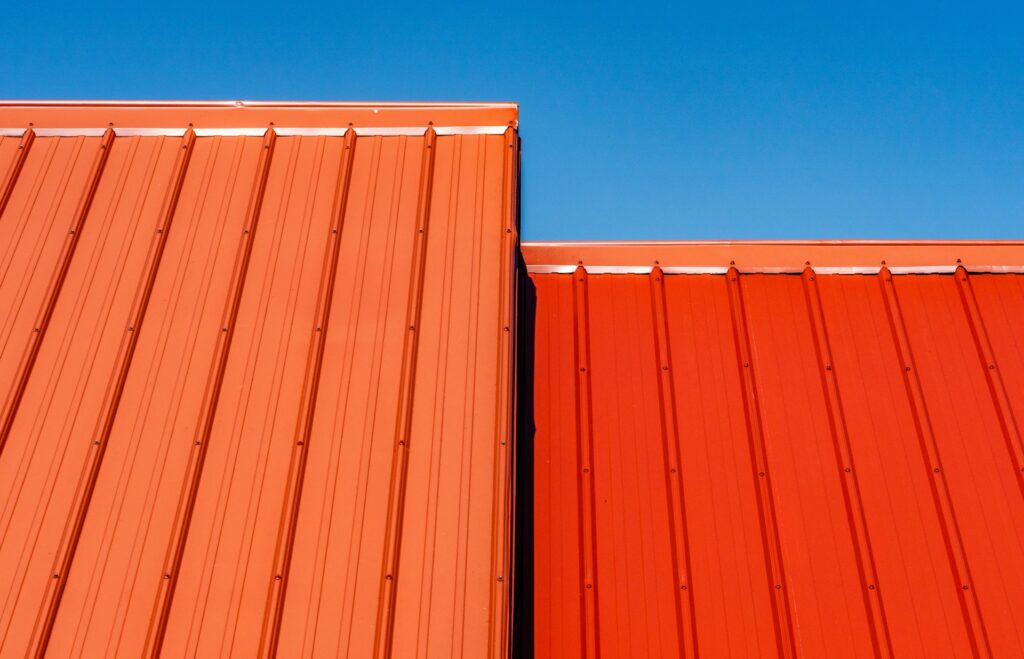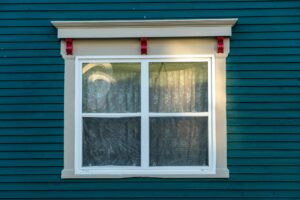Choosing a roofing material is a pivotal moment for any homeowner. More than a mere aesthetic choice, this decision can affect energy bills, property value, and future repair costs. When it comes to asphalt vs metal roofing, each has its distinct strengths. Understanding these options can help you align your decision with both immediate practicalities and your long-term aspirations for a home that supports comfort, resilience, and evolving needs.
A Bird’s-Eye View of Roofing Choices
Your roof does more than stand overhead—it shields the home from rain, wind, heat, and cold. Think of it as a protective canopy that also shapes architectural appeal. Selecting the right material is often a balancing act, weighing cost-effectiveness, durability, design preferences, and the broader impact on your home’s efficiency. As you explore asphalt vs metal roofing, keep in mind that both can be adapted to unique styles and budgets.
Below is a high-level look at the qualities most homeowners evaluate:
- Initial cost considerations.
- Ongoing maintenance and repair expectations.
- Longevity and overall return on investment.
- Aesthetic preferences and neighborhood norms.
- Energy efficiency and sustainability goals.
Each of these categories can guide you toward the roof that best meets your immediate needs while also adapting to future plans. Let’s dig deeper into each roofing option to see how it fulfills, or falls short of, these essential criteria.
Asphalt Roofing The Popular Choice
Asphalt roofing shingles have long been a favorite across many neighborhoods. Their widespread popularity stems not only from their cost-effectiveness but also from their relative ease of installation. Similar to how a sturdy yet flexible vine wraps itself around a trellis, asphalt shingles can settle on a range of roof shapes and pitches, making them highly adaptable for different home designs.
Cost and Availability
For many homeowners, budget constraints are the first consideration. Asphalt shingles are more affordable upfront than many other roofing materials. This appeals to those who need an immediate roofing solution without a steep initial payment. Moreover, local home centers often keep a wide assortment of asphalt shingles in stock, leading to convenient access and less waiting time for delivery.
Ease of Installation and Repair
Asphalt shingles are consistently praised for how simple they are to install. They arrive at the job site in manageable bundles, and roofing contractors familiar with this material can complete the project quickly. Down the road, if a particular section of the roof becomes damaged by wind or fallen branches, individual shingles can be replaced with relative ease—helping to minimize both costs and repair time.
Durability and Lifespan
Although asphalt roofs are designed to withstand a variety of weather conditions, they typically last anywhere from 15 to 30 years. The longevity can vary, depending on the thickness and type of asphalt shingle you choose. For example, architectural shingles are generally thicker and more robust than three-tab shingles, potentially extending the roof’s lifespan. If your ultimate goal is a short-term solution or you expect to move within a decade, asphalt could match your immediate goals perfectly.
Aesthetics and Variety
From earthy browns that mimic rustic wood tones to deep grays for a contemporary look, asphalt shingles come in a spectrum of colors. They can also be shaped to replicate the appearance of slate or wood shake. This versatility allows homeowners to blend their roofs harmoniously with existing architectural features, whether they’re going for a cozy Craftsman ambiance or a stately Victorian look.
Energy Efficiency and Environmental Impact
Traditional asphalt shingles have a tendency to absorb heat, raising indoor temperatures during hot summer months. However, newer “cool” asphalt shingle technologies use special granules to reflect more sunlight, helping to keep homes cooler. These energy-saving options may qualify for incentives or rebates in certain regions. Still, when it comes down to sheer energy efficiency and sustainability, asphalt may not stand on quite the same level as some other options.
Metal Roofing Longevity and Modern Appeal
Once viewed as a niche material reserved for barns or ultra-modern buildings, metal roofing has broken through its old stereotypes. It’s now recognized for its exceptional strength, energy efficiency, and varied aesthetic choices. This roofing type may liken to a resilient reed that stands upright in a windstorm—it can hold its own against the elements while adapting to different visual styles.
Cost vs Return on Investment
One immediate observation about metal roofing is its higher initial price tag. Nonetheless, many homeowners find that the long-term payoff balances the cost. Because metal roofs often last 40 to 70 years—potentially double or triple the lifespan of basic asphalt shingles—you’re less likely to face a costly roof replacement later on. For those with a long horizon, a metal roof can be an intelligent investment. It’s especially appealing if you plan to stay in your home and want to reduce the chance of repeated replacements.
Energy Efficiency and Environmental Sustainability
Energy efficiency is one of the hallmarks of metal roofing. These roofs naturally reflect a significant portion of the sun’s rays, which helps moderate attic temperatures and can lower cooling costs. Some metal roofing products come coated with reflective finishes, driving efficiency even further. If you aim to support a more sustainable lifestyle, metal roofing has many recyclable components—often produced in part from recycled materials themselves. When the roof has exhausted its long life, it can often be recycled again, minimizing landfill waste.
For additional details, you might find the resources from the Cool Roof Rating Council or Energy Star quite helpful. They provide in-depth research on roofing materials that meet energy efficiency standards.
Durability Under Extreme Conditions
Roof performance under severe weather events is crucial for homeowners in storm-prone regions. Metal roofs can maintain their integrity despite high winds and extreme temperatures. Some metal roofing products are rated for wind speeds exceeding 120 mph, making them a strong contender for coastal or tornado-prone areas. Homeowners who prioritize protection will likely find metal roofing’s durability a deciding factor.
Aesthetic Flexibility
Metal roofing styles have come a long way. Beyond the traditional standing seam design, you can find metal panels that mimic cedar shake, slate, or tile. The array of color options is also extensive—from earthy copper tones that acquire a patina over time to coated hues in blue-green or even rustic reds. This variety allows you to stay consistent with your home’s architectural style or stand out with a bold, modern flair.
Maintenance and Practical Considerations
Metal roofs require relatively low maintenance compared to other materials. Their surfaces naturally shed rain, snow, and debris, meaning fewer chances for moss and algae to accumulate. Over time, minor cosmetic issues can emerge, such as fading paint or small dents from hail. Yet many high-quality metal roofs come with warranties that cover paint finishes and structural integrity. If you’re building a home that you can grow with, metal roofing offers an organic sense of long-term security—much like a strong trunk growing in a stable environment.
Balancing Immediate Costs with Long-Term Vistas
When choosing between asphalt and metal roofing, it helps to take a broader view of potential future scenarios. Think of this process like planting a tree: the right choice depends on whether your goal is quick shade or lasting growth. If you’re planning to sell within a few years or have a limited budget, asphalt’s lower upfront cost and decent durability might be the more convenient option. On the other hand, if you envision staying in your home for decades, a metal roof’s higher initial cost could deliver more comfort, lower energy expenses, and fewer maintenance surprises over time.
Consider these questions as part of your dynamic decision-making:
- How long do you plan to live in this property?
- Do local regulations or homeowner associations limit your choices?
- Are you aiming for a style that matches the surrounding neighborhood?
- How does your home’s climate demand durability or energy efficiency?
- What level of maintenance are you comfortable with over the long run?
Answering these questions helps ensure your roofing choice flows naturally with both your present constraints and the shape of your future aspirations.
A Real-World Scenario
Imagine a growing family, living in a suburban setting with moderate storms and hot summers. They are considering whether to spend more for a metal roof or go for an asphalt shingle option. The family plans to stay in their home for at least 20 years, and they’re interested in supporting an eco-friendlier lifestyle. They also crave consistency—preferring to avoid major overhauls as they focus on raising their children.
For them, a metal roof might make sense, given its long lifespan and relative ease of maintenance. The potential energy savings in hot summers and the reduced likelihood of needing replacement in the future could indeed offset the higher initial cost. Plus, the variety of finishes allows them to choose a roof style that blends smoothly with their home’s design.
On the other hand, a young couple just starting out might lean on a narrower budget, needing a cost-effective solution that keeps immediate expenses manageable. Asphalt shingles, especially higher-grade architectural ones, could fulfill their needs for at least 15 years. Whether they decide to move or stay at that point, the asphalt option would have efficiently covered their first phase of homeownership.
Practical Maintenance Routines
Regardless of your roofing material, consistent attention keeps your roof in good shape. Much like regularly watering and pruning a garden, routine checks and simple upkeep can extend the life of your roof and protect your investment. Here are some basic practices:
- Clear debris: Remove leaves, twigs, and branches from gutters and roof surfaces.
- Inspect regularly: Check for cracked or curled shingles in asphalt roofs, or scratches and dents in metal roofs.
- Trim nearby trees: Overhanging limbs can scrape and damage roofing materials.
- Quick repairs: Address small leaks or missing shingles immediately to avoid water damage and mold.
- Periodic professional inspection: Schedule a pro roofer to assess your roof’s overall health every year or two.
Staying proactive with maintenance fosters a kind of harmonious integration between your roof and the changing environment—much like how a well-tended garden stays vibrant through seasonal shifts.
Making Your Decision with Confidence
Roof replacement can feel daunting—it’s a significant expense, and the potential for unexpected challenges may loom in the background. But by understanding the essential pros and cons of asphalt vs metal roofing, and by tuning in to your personal objectives, you’ll demystify the process and gain clarity. The more informed your choice, the smoother your experience will feel.
While asphalt may suit those with tighter budgets or shorter-term horizons, metal roofing stands out as a long-term investment in energy efficiency and durability. And in a climate-conscious era, having a roof that helps moderate indoor temperatures and uses recycled materials can be a source of pride, showcasing your commitment to an evolving, sustainable lifestyle.
Final Thoughts for a Lasting Roof
Deciding on the right roofing material goes deeper than picking a color or following a trend—it represents an investment in both the near-term comfort of everyone under the roof and the long-term value of your property. When you align your choice with your home’s architectural style, budgetary considerations, and aspirational goals, you’ll stand on a solid foundation that weathers the storms and shines in the sun.
As you move forward, stay attuned to how your needs evolve. Roofing knowledge is never static; it grows as your home, family, and community shift over time. Whatever choice you make—be it a traditional asphalt roof or a modern, sustainable metal alternative—know that with the right care, it can serve you faithfully for many seasons to come.
For further guidance, consider checking resources from the National Roofing Contractors Association or consulting a local professional. With a balanced understanding of both asphalt and metal roofing, you can take confident steps toward a roof that defends your home, enhances its beauty, and adapts gracefully to the challenges and opportunities that lie ahead.




